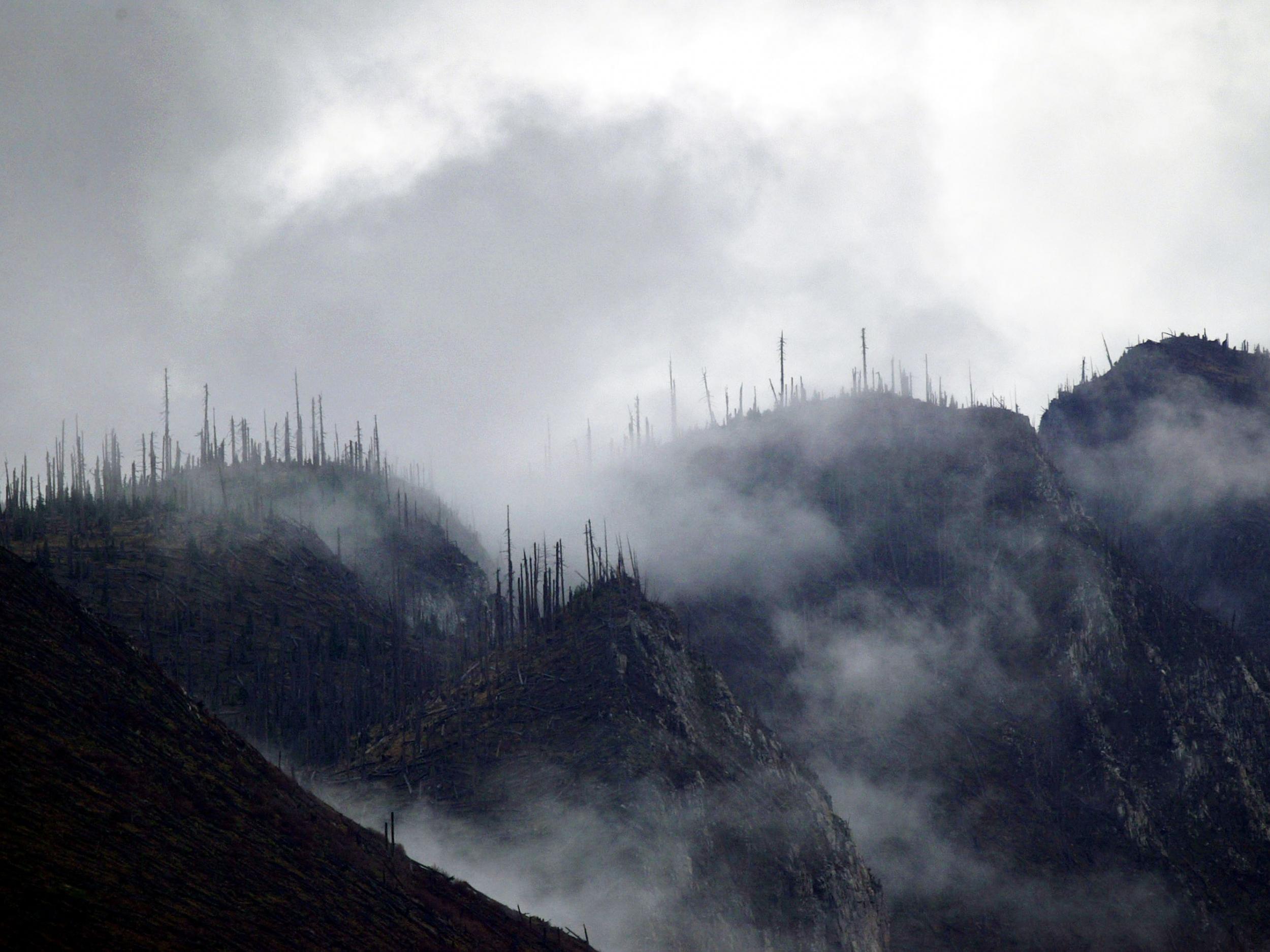'The Great Dying': World's worst-ever extinction event 'caused by UV radiation'
Destruction of planet's ozone layer by volcanic eruptions may have made trees infertile and caused collapse of ecosystems, according to new study

Your support helps us to tell the story
From reproductive rights to climate change to Big Tech, The Independent is on the ground when the story is developing. Whether it's investigating the financials of Elon Musk's pro-Trump PAC or producing our latest documentary, 'The A Word', which shines a light on the American women fighting for reproductive rights, we know how important it is to parse out the facts from the messaging.
At such a critical moment in US history, we need reporters on the ground. Your donation allows us to keep sending journalists to speak to both sides of the story.
The Independent is trusted by Americans across the entire political spectrum. And unlike many other quality news outlets, we choose not to lock Americans out of our reporting and analysis with paywalls. We believe quality journalism should be available to everyone, paid for by those who can afford it.
Your support makes all the difference.The planet’s largest ever extinction event may have been caused by UV radiation rendering Earth’s plant life infertile.
Around 250 million years ago, the End-Permian Extinction – known as “The Great Dying” – wiped out 95 per cent of marine life and 70 per cent of land animal life on Earth.
Eruptions from volcanoes in what is now Siberia have been cited as the primary cause of the event.
And researchers have previously suggested the release of large amounts of carbon dioxide and methane into the Earth’s atmosphere caused intense global warming, leading to the extinction of the vast majority of the planet’s inhabitants.
However, volcanoes could have had another harmful impact, according to new research published in the journal Science Advances.
Eruptions may also have destroyed the ozone layer, allowing powerful ultraviolet radiation to reach the planet’s surface. This radiation would have been devastating for life on Earth.
"During the End-Permian crisis, the forests may have disappeared in part or fully because of increased UV exposure," said Jeffrey Benca, a graduate student at the University of California, Berkeley who led the study.
"With pulses of volcanic eruptions happening, we would expect pulsed ozone shield weakening, which may have led to forest declines previously observed in the fossil record."
The harmful effects of ozone depletion have been well-documented. When fears about the “hole in the ozone layer” peaked in the 1980s, scientists and policy makers were spurred into action by fears of increased cancer rates resulting from elevated ultraviolet radiation levels.
The ozone layer protects the Earth from intense ultraviolet radiation, which causes mutations in DNA that can lead to cancer – and also, theoretically, induce infertility.
Scientists had previously found fossil evidence of malformed pollen grains from end-Permian plants – a clear sign of sterility, as pollen is the male component in plant sexual reproduction.
But Mr Benca and his collaborators wanted hard proof that ultraviolet radiation could induce such malformations.
To obtain this proof, the researchers exposed young pine trees to up to 13 times normal levels of ultraviolet radiation, comparable with estimates of the levels seen during the End-Permian event.
Not only did the rate of pollen malformation increase from a normal level of around 3 per cent to 15 per cent at the highest levels of radiation, every one of the 60 pine trees studied was rendered sterile by the treatment.
One of the study’s co-authors, the biologist Professor Ivo Duijnstee, described the results obtained by Mr Benca as “one of the most exciting things I've seen this decade”.
Professor Duijnstee described the work as “a time machine to test the potential of a hypothesis about what may have happened 252 million years ago”.
“[This] provides an excellent example illustrating how the slowly unfolding extinction on land over maybe tens or hundreds of thousands of years may have been caused by reproductive troubles at the base of the food chain.”
Without directly killing life on Earth, by disrupting plant reproduction excess ultraviolet radiation could have induced the collapse of ecosystems.
Though the ozone layer has recovered since the events of 250 million years ago, in recent years the actions of humans caused the partial destruction of the Earth’s ozone layer.
In January, satellite observations confirmed the success of the Montreal Protocol, which banned ozone-depleting chemicals and has led to the shrinking of the ozone hole over Antarctica.
The results, gathered by Nasa, were welcomed by Dr Jon Shanklin, one of the scientists who first identified the hole, as “definitely a good news story”.
However, a recent article published in the journal Atmospheric Chemistry and Physics revealed that ozone depletion in highly populated regions around the world is still a problem.
Besides explaining the most significant extinction event in the planet’s history, Mr Benca and his colleagues said their work suggests modern trees may be more vulnerable to ozone layer destruction than previously assumed.
Join our commenting forum
Join thought-provoking conversations, follow other Independent readers and see their replies
Comments